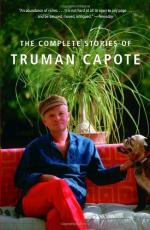|
This section contains 8,125 words (approx. 28 pages at 300 words per page) |

|
SOURCE: “The Daydream and Nightmare of Narcissus,” in Wisconsin Studies in Contemporary Literature, Vol. 1, No. 2, Spring, 1960, pp. 5–21.
In the following essay, Hassan identifies the Narcissus theme as the unifying motif of Capote's work.
The name of Truman Capote is already legend, and the picture of his boyish face—the famous bangs, the wide, mysterious eyes—is on the cover of all his books to give the legend credence. To some, Capote is the sprite with a monstrous imagination, the lonely child—“I had the most insecure childhood I know of. I felt isolated from all people”—living with his aunts in Alabama, painting flowers on glass and tap-dancing on the Mississippi boats. To others he is simply the ephebic purveyor of Gothic extravaganzas, the fashionable opportunist of a mid-century madness. Whatever the faults of Capote may be, it is certain that his work possesses more range and energy...
|
This section contains 8,125 words (approx. 28 pages at 300 words per page) |

|


